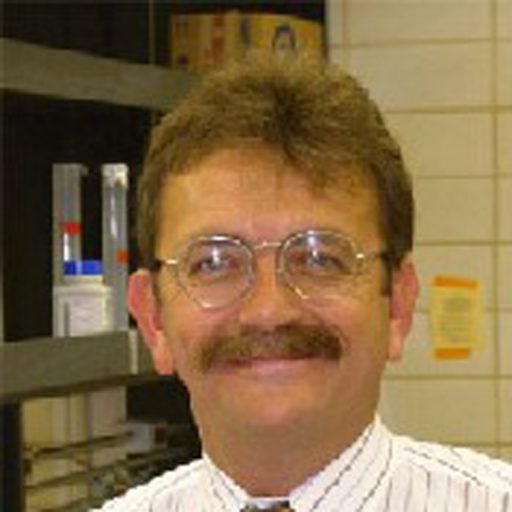The success at UCF is a critical step in developing “human-on-a-chip” systems. The systems are models that recreate how organs or a series of organs function in the body. Their use could accelerate medical research and drug testing, potentially delivering life-saving breakthroughs much more quickly than the typical 10-year trajectory most drugs take now to get through animal and patient trials.
“These types of systems have to be developed if you ever want to get to a human-on-a-chip that recreates human function,” said James Hickman, a UCF bioengineer who led the breakthrough research. “It’s taken many trials over a number of years to get this to occur using human derived stem cells.”
Hickman’s work, funded through the National Institute of Neurological Disorders and Stroke (NINDS) at the National Institutes of Health, is described in the December issue of Biomaterials.
Hickman is excited about the future of his research because several federal agencies recently launched an ambitious plan to jump-start research in “human-on-a-chip” models by making available at least $140 million in grant funding.
The National Institutes of Health (NIH), the Defense Advanced Research Projects Agency (DARPA), and the Federal Drug Administration (FDA) are leading the research push.
The goal of the call for action is to produce systems that include various miniature organs connected in realistic ways to simulate human body function. This would make it possible, for instance, to test drugs on human cells well before they could safely and ethically be tested on living humans. The technique could potentially be more effective than testing in mice and other animals currently used to screen promising drug candidates and to develop other medical treatments.
Such conventional animal testing is not only slow and expensive, but often leads to failures that might be overcome with better testing options. The limitations of conventional testing options have dramatically slowed the emergence of new drugs, Hickman said.
The successful UCF technique began with a collaborator, Brown University Professor Emeritus Herman Vandenburgh, who collected muscle stem cells via biopsy from adult volunteers. Stem cells are cells that can, under the right conditions, grow into specific forms. They can be found among normal cells in adults, as well as in developing fetuses.
Nadine Guo, a UCF research professor, conducted a series of experiments and found that numerous conditions had to come together just right to make the muscle and spinal cord cells “happy” enough to join and form working junctions. This meant exploring different concentrations of cells and various timescales, among other parameters, before hitting on the right conditions.
“Right now we rely a lot on animal systems for medical research but this is a pure human system,” Guo said. “This work proved that, biologically, this is workable.”
Besides being a key requirement for any complete human-on-a-chip model, such nerve-muscle junctions might themselves prove important research tools. These junctions play key roles in Amyotrophic lateral sclerosis, commonly known as Lou Gehrig’s disease, in spinal cord injury, and in other debilitating or life threatening conditions. With further development, the team’s techniques could be used to test new drugs or other treatments for these conditions even before more expansive chip-based models are developed.
